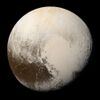Astronomy:2010 FX86
From HandWiki
| Discovery[1] | |
|---|---|
| Discovered by | Observers S. S. Sheppard, A. Udalski, I. Soszynski |
| Discovery site | Las Campanas Observatory, Chile |
| Discovery date | 17 March 2010 |
| Designations | |
| 2010 FX86 | |
| Minor planet category | TNO[2] distant[3] |
| Orbital characteristics[2] | |
| Epoch 27 April 2019 (JD 2458600.5) | |
| Uncertainty parameter 3 | |
| Observation arc | 2634 days (7.21 yr) |
| |{{{apsis}}}|helion}} | 50.161 astronomical unit|AU (7.5040 Tm) |
| |{{{apsis}}}|helion}} | 44.109 AU (6.5986 Tm) |
| 47.135 AU (7.0513 Tm) | |
| Eccentricity | 0.064199 |
| Orbital period | 323.61 yr (118199 d) |
| Mean anomaly | 295.094° |
| Mean motion | 0° 0m 10.965s /day |
| Inclination | 25.1697° |
| Longitude of ascending node | 311.074° |
| |{{{apsis}}}|helion}} | ≈ 25 February 2084[4] ±44 days |
| 347.887° | |
| Earth MOID | 43.0966 AU (6.44716 Tm) |
| Jupiter MOID | 39.0007 AU (5.83442 Tm) |
| Physical characteristics | |
| Mean diameter | 305–682 km[2][3][5][lower-alpha 1] 549 km[6][lower-alpha 2] |
| Rotation period | 15.80 h (0.658 d)[2][lower-alpha 3] |
| Geometric albedo | 0.09 (assumed)[6] |
| Absolute magnitude (H) | 4.7[2][3] 4.6[6] |
2010 FX86, also written 2010 FX86, is a relatively bright trans-Neptunian object[2] with an absolute magnitude of about 4.65.[2][3][6]
It was first discovered on 17 March 2010, at Las Campanas Observatory in Chile, by S. S. Sheppard, A. Udalski and I. Soszynski. No earlier precovery images for it have been found. It is estimated to be about 520 kilometres (320 mi) in diameter,[6] with a rotation period of approximately 15.80 hours,[2] but as yet no detailed photometry has been taken to properly determine colour or albedo, or to better confirm its rotational lightcurve.
Notes
References
- ↑ "MPEC 2010-G57 : 2010 FX86". Minorplanetcenter.org. http://www.minorplanetcenter.org/mpec/K10/K10G57.html.
- ↑ 2.0 2.1 2.2 2.3 2.4 2.5 2.6 2.7 Alan Chamberlin. "JPL Small-Body Database Browser". Ssd.jpl.nasa.gov. http://ssd.jpl.nasa.gov/sbdb.cgi?sstr=2010FX86.
- ↑ 3.0 3.1 3.2 3.3 "IAU Minor Planet Center". Minorplanetcenter.net. 2018-03-23. http://www.minorplanetcenter.net/db_search/show_object?object_id=2010+FX86.
- ↑ JPL Horizons Observer Location: @sun (Perihelion occurs when deldot changes from negative to positive. Uncertainty in time of perihelion is 3-sigma.)
- ↑ "Conversion of Absolute Magnitude to Diameter for Minor Planets". http://www.physics.sfasu.edu/astro/asteroids/sizemagnitude.html.
- ↑ 6.0 6.1 6.2 6.3 6.4 Michael E. Brown. "How many dwarf planets are there in the outer solar system? (updates daily)". California Institute of Technology. http://web.gps.caltech.edu/~mbrown/dps.html.
External links
- 2010 FX86 at the JPL Small-Body Database
 |



